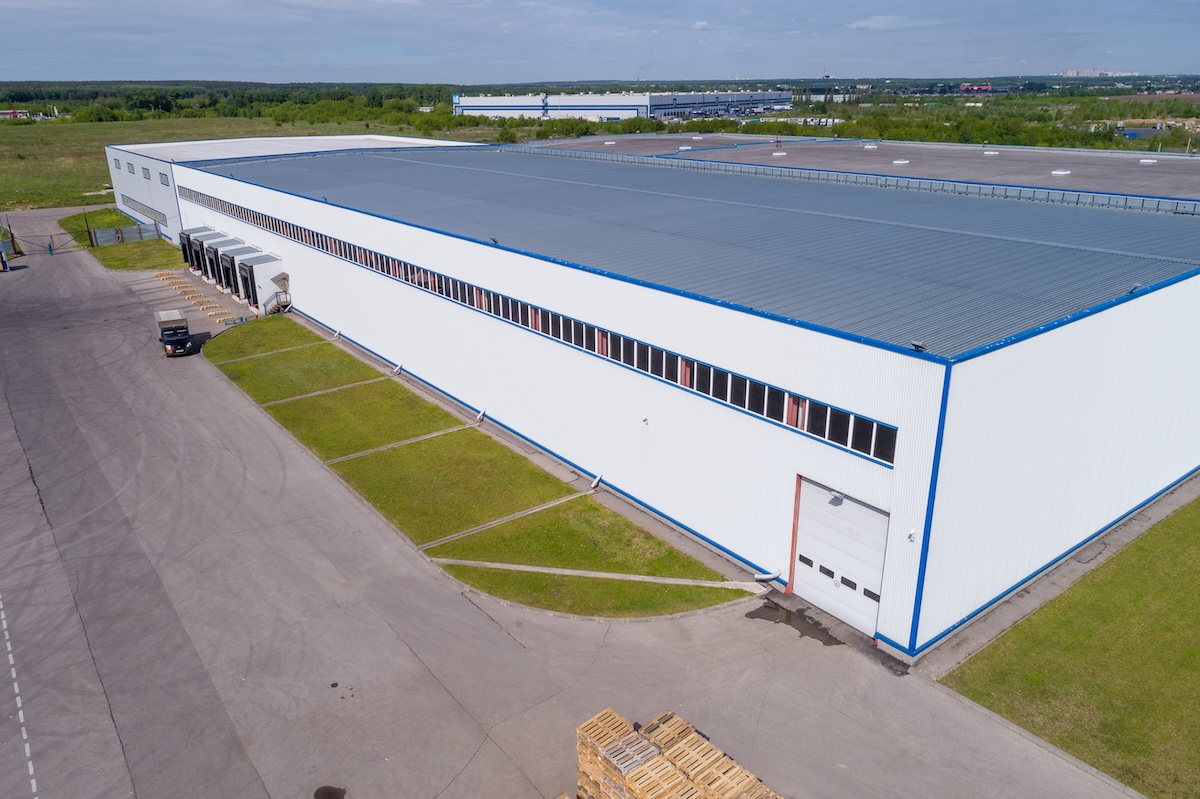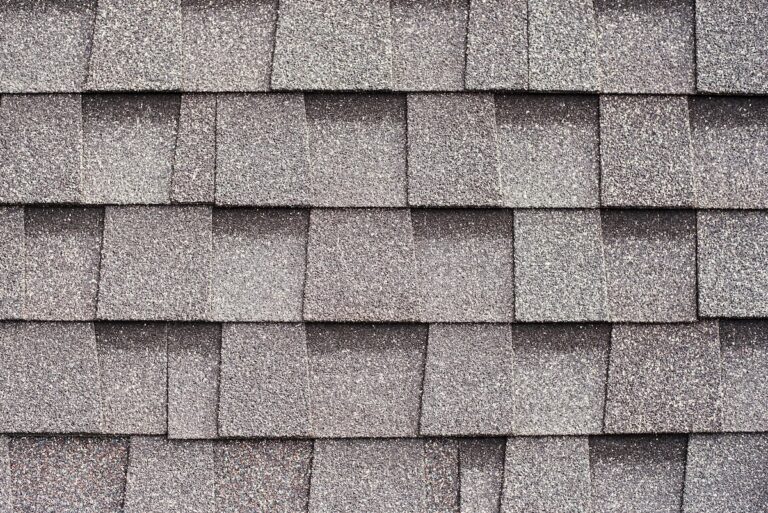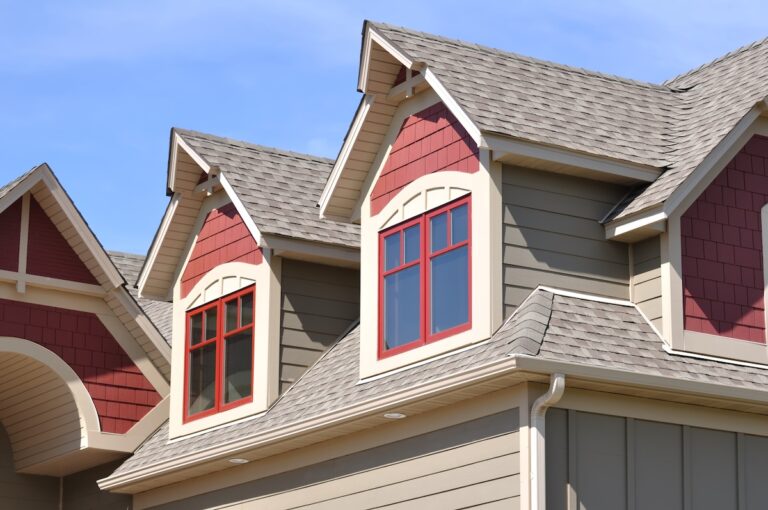Understanding the parts of a commercial roof is essential for business owners and property managers looking to extend the life of their building and protect their investment. A commercial roofing system includes more than just the outer membrane. Each component plays a key role in performance, efficiency, and durability.
Whether you’re overseeing new construction or planning a roof replacement, this guide will help you make informed decisions. Here’s what you’ll learn:
- Which components are essential to structural integrity
- How insulation and membranes affect energy efficiency
- Why drainage systems and flashing prevent water damage
Below, we’ll explore each part of the system and how they work together to create a durable and efficient commercial roof.
❗️ Roof Deck
The roof deck is the foundation of your commercial roofing system. It supports all other layers and needs to be structurally sound.
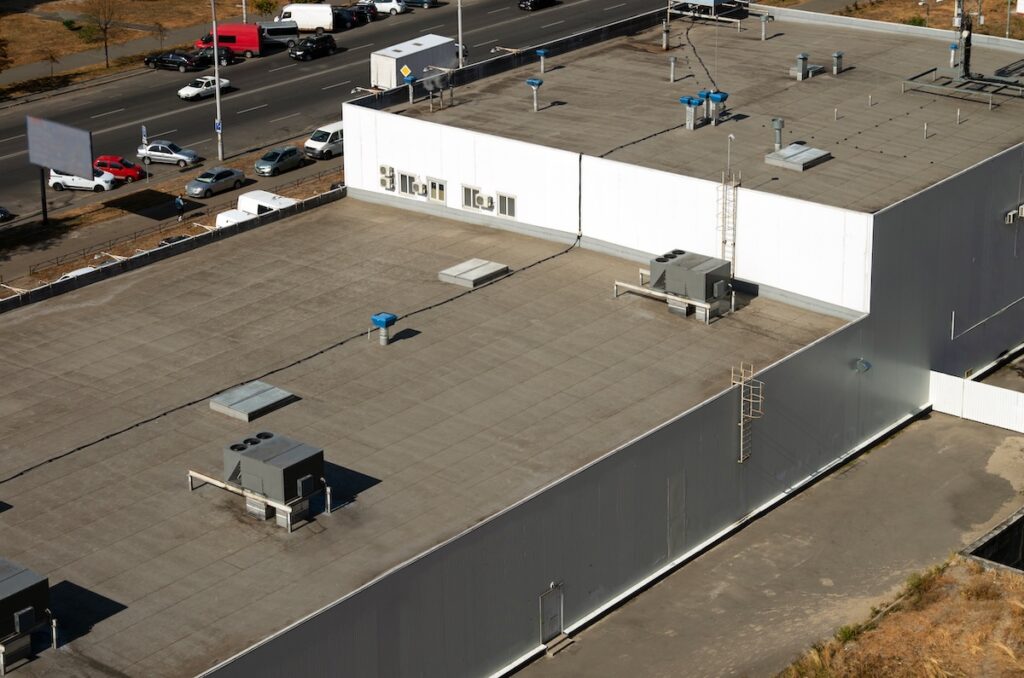
Types of Roof Decking
The most common materials used include:
- Steel: Often used for large commercial buildings
- Concrete: Offers excellent fire resistance and durability
- Wood: Less common but sometimes used in smaller or older buildings
Each material impacts how the rest of the roofing system is installed and maintained.
Deck Condition and Preparation
Before installing a new roof, it’s critical to inspect the deck:
- Look for rust or rot
- Ensure load-bearing strength
- Confirm flatness and slope
Neglecting the deck’s condition can lead to early roof failure.
👉 Insulation
Roof insulation improves energy efficiency and helps maintain interior temperatures throughout the year.
Common Insulation Types
Several materials are used for commercial roofing insulation:
- Polyisocyanurate (Polyiso): High R-value and moisture resistance
- Expanded Polystyrene (EPS): Lightweight and affordable
- Extruded Polystyrene (XPS): Good balance between durability and cost
Selecting the right type depends on climate and energy goals.
Benefits of Proper Insulation
Proper insulation in the hands of skillful roofers in Pennsylvania offers advantages like:
- Reduced HVAC costs
- Increased interior comfort
- Moisture resistance and condensation control
Insulation not only lowers energy bills but also prolongs roof life.
🏢 Membrane or Roofing Material
This is the outermost layer of a commercial roof that protects against the elements.
Single-Ply Membranes
Single-ply materials are popular in flat commercial roofing. These include:
- TPO (Thermoplastic Olefin): Lightweight and energy-efficient
- EPDM (Ethylene Propylene Diene Monomer): Known for durability and flexibility
- PVC (Polyvinyl Chloride): Excellent chemical resistance and weldable seams
Each membrane type has its own benefits based on your property’s needs.
Built-Up Roofing (BUR) and Modified Bitumen
Some commercial flat roofs use layered systems like:
- BUR: Multiple layers of tar and gravel for added protection
- Modified Bitumen: Asphalt-based sheets combined with polymer modifiers
These are often chosen for their robustness and longevity.
📋 Flashing and Edge Details
Flashing protects roof edges and penetrations by sealing them from water intrusion.
Flashing Locations
Flashing is typically found around:
- HVAC units and vents
- Skylights and drains
- Roof perimeters and walls
Failing flashing is one of the most common causes of leaks.
Edge Metal and Coping
Roof edges need protection too. Key components include:
- Coping: Covers parapet walls and prevents water infiltration
- Edge metal: Secures the roof membrane and adds wind resistance
These small details can make a major impact on roof lifespan.
💧 Drainage Systems
A well-functioning drainage system, provided by a detail-oriented roofing company, will prevent water from accumulating and damaging your roof.
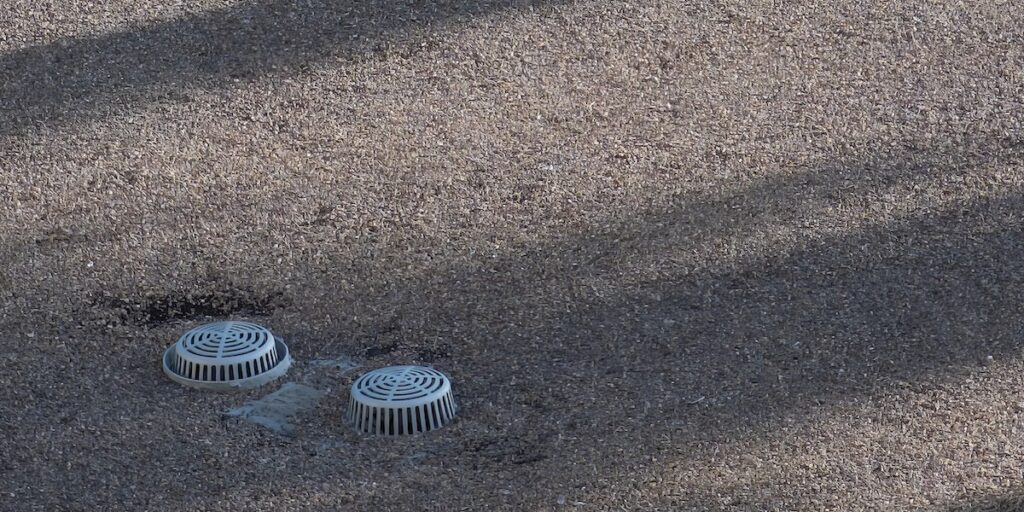
Internal Drains and Scuppers
Commercial roofs often include:
- Internal Drains: Located near the center of the roof and connected to pipes inside the building
- Scuppers: Openings on the edge of the roof that direct water away from the structure
These systems must be kept clear to avoid standing water.
Slope and Tapered Insulation
Even flat roofs have a slight slope. Tapered insulation is used to:
- Guide water toward drains
- Prevent ponding
- Improve overall roof performance
Poor drainage is one of the fastest ways to shorten roof lifespan.
✅ 8 Essential Parts of a Commercial Roof
Here’s a recap of the most important components that make up a commercial roofing system:
- Roof Deck: Provides structural support and stability for the entire system.
- Vapor Barrier: Protects against moisture entering from the interior of the building.
- Insulation: Controls energy efficiency and interior temperature.
- Cover Board: Added between insulation and membrane for added durability and impact resistance.
- Roofing Membrane: Serves as the primary waterproofing layer.
- Flashing: Seals penetrations and transitions to prevent leaks.
- Drainage Components: Includes drains, scuppers, and tapered insulation to manage water runoff.
- Edge Protection: Secures the perimeter and shields from wind uplift and water intrusion.
Understanding each part ensures smarter maintenance and better decisions during roof installations or replacements. Anticipating the potential problems that a commercial roof may encounter is a great way to solve them promptly.
⭐️ Rooftop Accessories
Beyond the core structure, commercial roofs may include accessories that affect performance and accessibility.
Walk Pads and Pavers
Walk pads protect the membrane in high-traffic areas:
- Around HVAC systems
- Along service routes
- Near roof hatches
They minimize damage from technicians and foot traffic.
HVAC and Equipment Mounts
Large commercial buildings often have:
- Rooftop HVAC units
- Solar panels
- Satellite dishes
These components require custom mounting and proper flashing to prevent leaks.
🛠️ Maintenance Features
Designing with maintenance in mind helps extend the life of your commercial roof.
Access Points
Having access hatches or ladders makes regular inspections easier. This supports:
- Timely repairs
- Seasonal cleanings
- Preventive maintenance
Ease of access leads to better long-term roof performance.
Monitoring Systems
Advanced commercial buildings may include:
- Leak detection sensors
- Moisture monitoring under membranes
- Infrared thermal imaging systems
These tools help detect issues early and reduce emergency repairs.
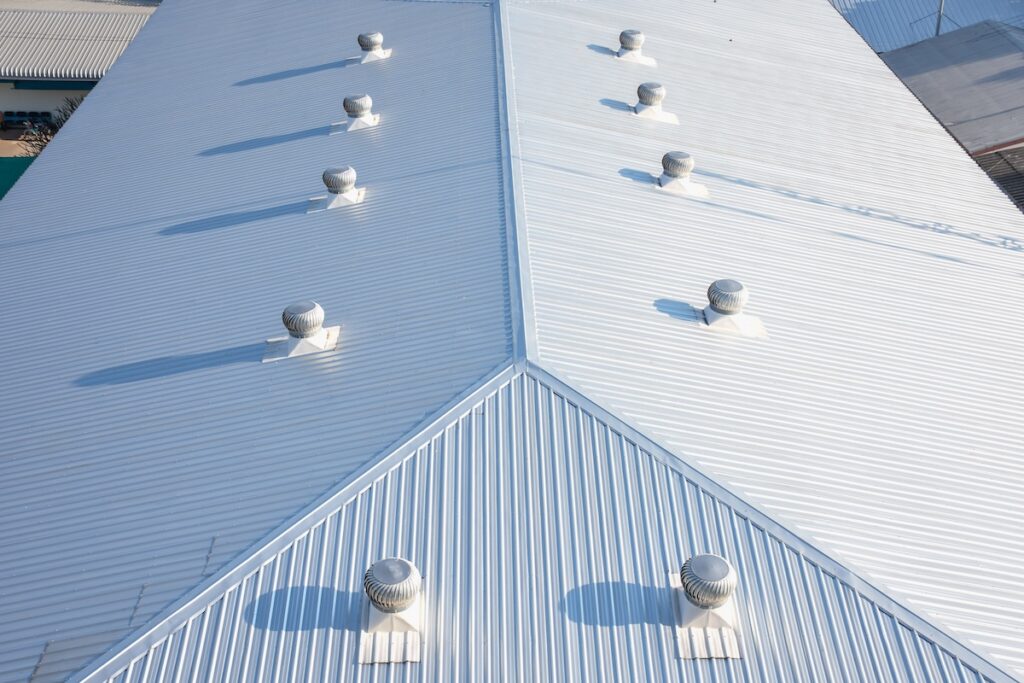
🤝 Partner with G. Cannon for a Stronger, Smarter Roof
When you understand the parts of a commercial roof, you gain more control over your property’s performance, safety, and cost-efficiency. From the roof deck and insulation to membranes and drainage systems, each element has a critical role to play.
At G. Cannon, we specialize in designing and installing commercial roofing systems that stand the test of time. Our experienced team prioritizes quality craftsmanship, clear communication, and long-term reliability. Whether you’re building new or replacing an aging roof, we have the knowledge and tools to deliver a complete solution.
Get in touch with G. Cannon today! Your property deserves expert protection from the top down.
